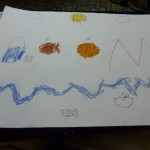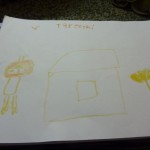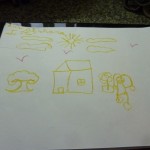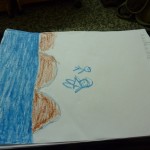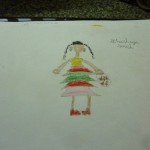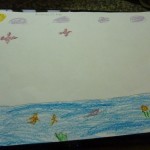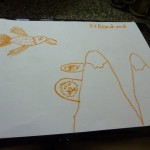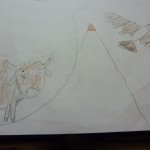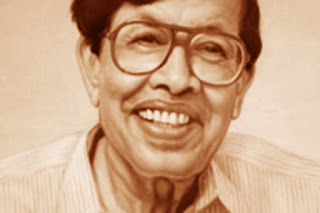Reading to me is like drinking water. You have to do it every day, you have to do it in substantial quantities and it is a kind of miracle cure for so many things. I read for pleasure as a kid. I read story books, I read English readers with stories and biographies in them. I read comic books like Amar Chitra Katha and magazines like Tinkle and Archie and even grownup magazines like Readers Digest.
It never occurred to me that reading for pleasure would be a no-no especially among families similar to mine. I wanted to write a single blog post about reading for pleasure. But as I have been talking to mums in India, I realize there is more to talk about and write about.
So in this first post on the topic, I am going to talk about infrastructure of books – both private and public.
When I was growing up, India didn’t have a thriving children’s literature market. There was Ruskin Bond who I loved and I read R K Narayan a nd of course the Kaziranga Trail by Arup Kumar Dutta. I loved it so much that I tracked it down again, bought a copy and read it again and loved it as much as I did back then.
nd of course the Kaziranga Trail by Arup Kumar Dutta. I loved it so much that I tracked it down again, bought a copy and read it again and loved it as much as I did back then.
As a grownup when I go back to India and meet children in schools or storytelling clubs and equally here in Britian when I go into schools that have a percentage of population with Asian backgrounds, I find that the parents have this monopoly on what their kids read. And they want kids to read non-fiction, school books, general knowledge. Reading for pleasure is second to reading to score marks in exams.
This could be for many reasons. In India, there is no a bsolutely no concept of government run libraries in your own neighbourhoods that anyone could walk in and that caters to all age-groups. In Chennai, when I was growing up, there was Raviraj Lending Library, a private enterprise for readers like me and my mum used to take me 10 km on a bus to the library so I could borrow a month’s worth of comics and books.
bsolutely no concept of government run libraries in your own neighbourhoods that anyone could walk in and that caters to all age-groups. In Chennai, when I was growing up, there was Raviraj Lending Library, a private enterprise for readers like me and my mum used to take me 10 km on a bus to the library so I could borrow a month’s worth of comics and books.
When I was in Chennai this time, I visited the Connemara Library, a government library. It was like a fortress. Granted it is like the British Library equivalent with rare collections. But it had the worst rules to make a library a living and breathing place. It was almost like a museum of books where no one was allowed to enjoy it.
 I was asked to leave all my bags and carry only important things into the library. It didn’t have friendly staff and it didn’t have an open door. It was shut and boarded up and was a place where researchers would burrow and make notes and leave. It wasn’t a place that would make today’s child tomorrow’s reader.
I was asked to leave all my bags and carry only important things into the library. It didn’t have friendly staff and it didn’t have an open door. It was shut and boarded up and was a place where researchers would burrow and make notes and leave. It wasn’t a place that would make today’s child tomorrow’s reader.
But the newspapers say the government is doing a lot about public libraries and are also bringing digital services to the people in small towns and villages.
The other sad aspect of my visit this time to India was the number of bookshops could be counted in one hand. Chennai is ¼ the size of London with ½ of London’s population. So more people live in a smaller area. But the number of libraries and bookshops would be far less in comparison. Landmark was one of the few we all visited growing up and being young adults and it too shut its doors in 2014.
If there aren’t that many bookshops, how would children buy books and read them? If there aren’t libraries where they could walk in and pick up a book and read – how would they learn to enjoy reading? There are storytelling clubs and private libraries coming up – then cost becomes a deciding factor denying poor people the chance to change their lives and enjoy the pleasures of reading.
When I was a kid, school libraries were part of my life. But I was one of the few who studied in a private school. Libraries in government school would have been lacking then and they sure are lacking now. Every year, my Mum collects donations for a local government-run school for under-privileged kids and I always insist they buy books.
 Book fairs are a very Indian thing – due to the scale I think. There are more people and hence everything is larger than life. A huge place filled with tents filled with books. You go there and you will realize that most people check the price of the books in proportion to its size. In fact one of my friends posted a notice on Facebook that said they are selling books by weight in a second-hand bookstore.
Book fairs are a very Indian thing – due to the scale I think. There are more people and hence everything is larger than life. A huge place filled with tents filled with books. You go there and you will realize that most people check the price of the books in proportion to its size. In fact one of my friends posted a notice on Facebook that said they are selling books by weight in a second-hand bookstore.
 That kind of reminds me of a time when I was writing in Singapore – and I was asked to do a book of riddles (I pitched it to be fair). And I was told I couldn’t do a book of 10 or 20 riddles. But a book of riddles with 128 pages. That totalled up to 600 riddles – all original.
That kind of reminds me of a time when I was writing in Singapore – and I was asked to do a book of riddles (I pitched it to be fair). And I was told I couldn’t do a book of 10 or 20 riddles. But a book of riddles with 128 pages. That totalled up to 600 riddles – all original.
One of the reasons picture-books don’t used to sell well in Singapore, is that people don’t want to spend $10 on 32 pages (out of which 4 are the covers.) Of course Singapore has the best national library system and those who couldn’t afford to buy could borrow. That is not the case in India.
In a country where many villages don’t have electricity or primary schools, it is fair enough that reading is of secondary concern. But as a girl who grew up in a lower middle-class family with one breadwinner supporting a joint-family of 8, reading broadened my horizons. I wanted to see the world that I was reading about. I picked up vocabulary, grammar and more by reading and reading and reading. I should point out that I just didn’t read English books. I read Tamil and Hindi books. I read literature in my language too. As long as I was reading I was happy.
Having bookshops and free libraries, having librarians who are widely read, having parents who love reading themselves, teachers who can quote from books and give examples to real-life situations from books make up the fabric of a culture that would enjoy reading.

In many ways, mind you, this is my personal opinion – movies are to Indians that books are to others. Like cricket vs football. People save up money to watch movies. Every small village will have talkies. Everyone can quote dialogue from movies. I’m not saying that is wrong. But I know these movies had screenplays and those who wrote some of these wonderful screenplays are very well-read. But if movies can be made cost-effective for all walks of life, why can’t we do the same with books?
Living in Britain now, I am part of the history where local governments are shutting down libraries to save money. And there is an outcry. I grieve when that happens because libraries have been built and stocked. Librarians have been trained. Don’t let that go. There are so many countries where building a single library is an Everest climb. Protect what you have, Britain. You need well-read citizens tomorrow to run this country.
 Coming back to India where there are more cinemas being built than libraries – whose job is to build libraries and cultivate reading? Isn’t literacy a worthy goal? Isn’t reading and writing more enjoyable when the reward is that you can read stories, and write them yourself?
Coming back to India where there are more cinemas being built than libraries – whose job is to build libraries and cultivate reading? Isn’t literacy a worthy goal? Isn’t reading and writing more enjoyable when the reward is that you can read stories, and write them yourself?
Is it the government? Is it the politicians? Is it the schools? Or is the parents?





